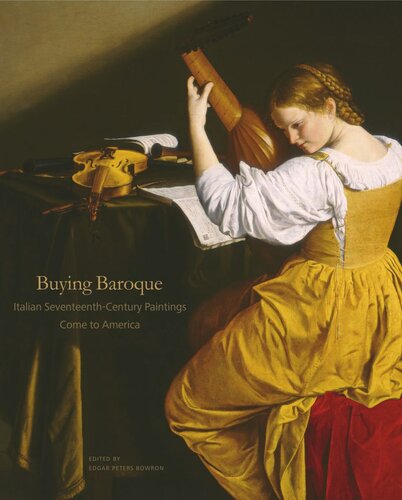

Most ebook files are in PDF format, so you can easily read them using various software such as Foxit Reader or directly on the Google Chrome browser.
Some ebook files are released by publishers in other formats such as .awz, .mobi, .epub, .fb2, etc. You may need to install specific software to read these formats on mobile/PC, such as Calibre.
Please read the tutorial at this link: https://ebookbell.com/faq
We offer FREE conversion to the popular formats you request; however, this may take some time. Therefore, right after payment, please email us, and we will try to provide the service as quickly as possible.
For some exceptional file formats or broken links (if any), please refrain from opening any disputes. Instead, email us first, and we will try to assist within a maximum of 6 hours.
EbookBell Team

5.0
50 reviewsAlthough Americans have shown interest in Italian Baroque art since the eighteenth century—Thomas Jefferson bought copies of works by Salvator Rosa and Guido Reni for his art gallery at Monticello, and the seventeenth-century Bolognese school was admired by painters Benjamin West and John Singleton Copley—a widespread appetite for it only took hold in the early to mid-twentieth century. Buying Baroque tells this history through the personalities involved and the culture of collecting in the United States.
The distinguished contributors to this volume examine the dealers, auction houses, and commercial galleries that provided access to Baroque paintings, as well as the collectors, curators, and museum directors who acquired and shaped American perceptions about these works, including Charles Eliot Norton, John W. Ringling, A. Everett Austin Jr., and Samuel H. Kress. These essays explore aesthetic trends and influences to show why Americans developed an increasingly sophisticated taste for Baroque art between the late eighteenth century and the 1920s, and they trace the fervent peak of interest during the 1950s and 1960s.
A wide-ranging, in-depth look at the collecting of seventeenth- and eighteenth-century Italian paintings in America, this volume sheds new light on the cultural conditions that led collectors to value Baroque art and the significant effects of their efforts on America’s greatest museums and galleries.
In addition to the editor, contributors include Andrea Bayer, Virginia Brilliant, Andria Derstine, Marco Grassi, Ian Kennedy, J. Patrice Marandel, Pablo Pérez d’Ors, Richard E. Spear, and Eric M. Zafran.